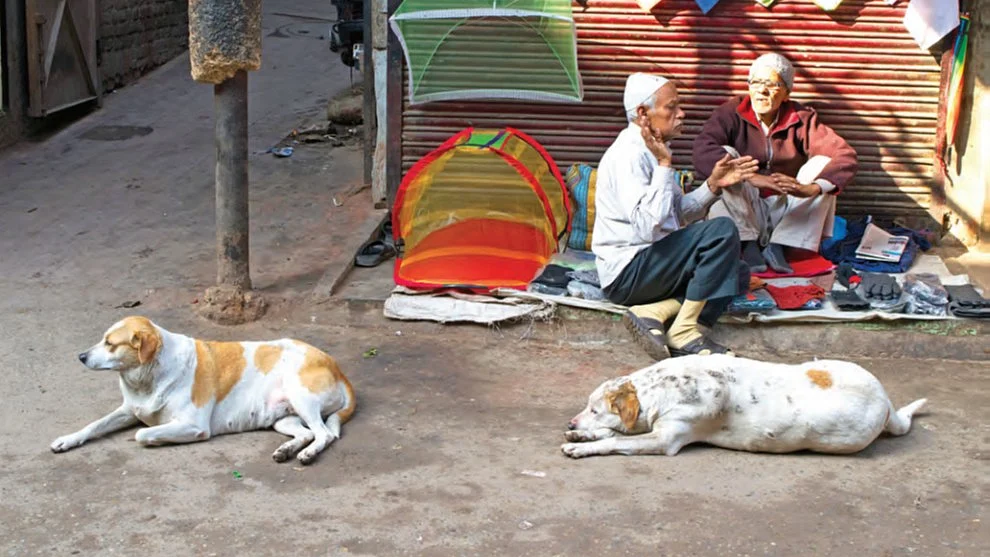Nation
“Surely there is a better way”: Priyanka Gandhi’s plea for humane management of stray dogs
How did other nations successfully manage this problem? India’s neighbour Bhutan is a recent successful instance

Priyanka Gandhi Vadra warns Delhi’s stray dog relocation plan risks cruelty due to lack of shelter capacity.
Delhi sees rising dog bite cases but no rabies deaths since 2022, with timely vaccination vital for prevention.
Indian cities adopt varied stray control measures, from sterilisation drives to feeding zones and awareness campaigns.
Global examples like Bhutan and the Netherlands show humane, effective stray management through sterilisation, vaccination and strict pet laws.
Published: undefined
Congress leader and Wayanad MP Priyanka Gandhi Vadra has voiced strong concern over the Supreme Court's directive of 11 August to move stray dogs in the Delhi NCT into shelters, ensuring capacity for at least 5,000 animals within weeks, warning that the move risks “horrendously inhumane treatment” due to a shortage of adequate facilities.
In a social media post, she stressed that urban animals already face mistreatment and brutality, and urged authorities to adopt more compassionate, sustainable solutions that keep the animals safe.
Published: undefined
The debate comes against the backdrop of rising dog bite cases in the capital. Government data presented in Parliament shows Delhi recorded 6,691 incidents in 2022, another 17,874 in 2023, and 25,210 in 2024, with a further 3,196 reported in January 2025 alone. While the city has not logged a rabies death since 2022, experts caution that the disease remains fatal in 100 per cent of untreated cases and is overwhelmingly linked to dog bites (as well as monkeys, also a problem in the capital).
Published: undefined
Specialists underline that not all dog bites transmit rabies, but any suspected exposure requires immediate post-bite vaccination, ideally with rabies immune globulin for severe wounds. Delayed treatment has been cited in recent rabies deaths in Kerala, including cases among vaccinated individuals, highlighting gaps in awareness and access.
India’s stray dog population is estimated at over 60 million, however, making it one of the world’s largest. The Govt of Delhi NCT, acting under Supreme Court orders, has been tasked with sheltering, sterilising, vaccinating and monitoring the stray dogs in captivity now — contrary to earlier rules that advocated a TSR (treat, sterilise, release) policy, alarming animal rights advocates.
Published: undefined
Other Indian cities have adopted varying approaches — Mumbai’s NGO-led sterilisation drives, Kolkata’s designated feeding zones, Jaipur’s daily spay clinics, and Goa’s successful ‘Mission Rabies’ programme, which has kept the state rabies-free since 2017.
But what of whole nations that have successfully managed their stray populations?
Globally, some nations offer models that balance public safety with animal welfare.
Our immediate neighbour Bhutan stands out for achieving 100 per cent sterilisation and vaccination of its stray dogs in 2023, over a period of just 14 years, by integrating animal welfare into public health policy and mobilising communities in awareness campaigns — proving that even with limited resources, humane and effective outcomes are possible. Is India not able to equal its human resources and outlay on the problem at a per capita level?
Published: undefined
The Netherlands eradicated strays through a nationwide catch–neuter–vaccinate–return programme, strict anti-abandonment laws, and cultural adoption drives.
Thailand’s Soi Dog Foundation successfully cut down stray numbers in tourist hotspot Phuket by a massive 90 per cent through mass neutering and vaccination.
China’s high vaccination coverage has eliminated human rabies cases in Beijing, though its crackdowns on unregistered dogs have stirred debate around animal rights and humane treatment of animals.
In Brazil, the city of São Paulo also reduced its stray population by 60 per cent through sterilisation and adoption schemes.
Austin in the US follows a rehoming model, keeping animals in separate kennels in no-kill shelters. (By contrast, many an Indian 'shelter' is an open, overcrowded space, where the territorial animals are stressed, diseases spread and injuries to weaker and younger animals common.)
Several countries — Germany, Spain, Japan and Australia, among them — combine strict ownership laws, microchipping and strong adoption cultures to keep numbers of feral dogs low.
Animal welfare experts argue that India could draw on such lessons to craft policies that protect both people and dogs. As Gandhi Vadra’s intervention makes clear, the challenge is not only to control stray populations and prevent rabies, but to ensure that solutions do not come at the cost of the animals’ dignity or well-being.
Published: undefined
Follow us on: Facebook, Twitter, Google News, Instagram
Join our official telegram channel (@nationalherald) and stay updated with the latest headlines
Published: undefined